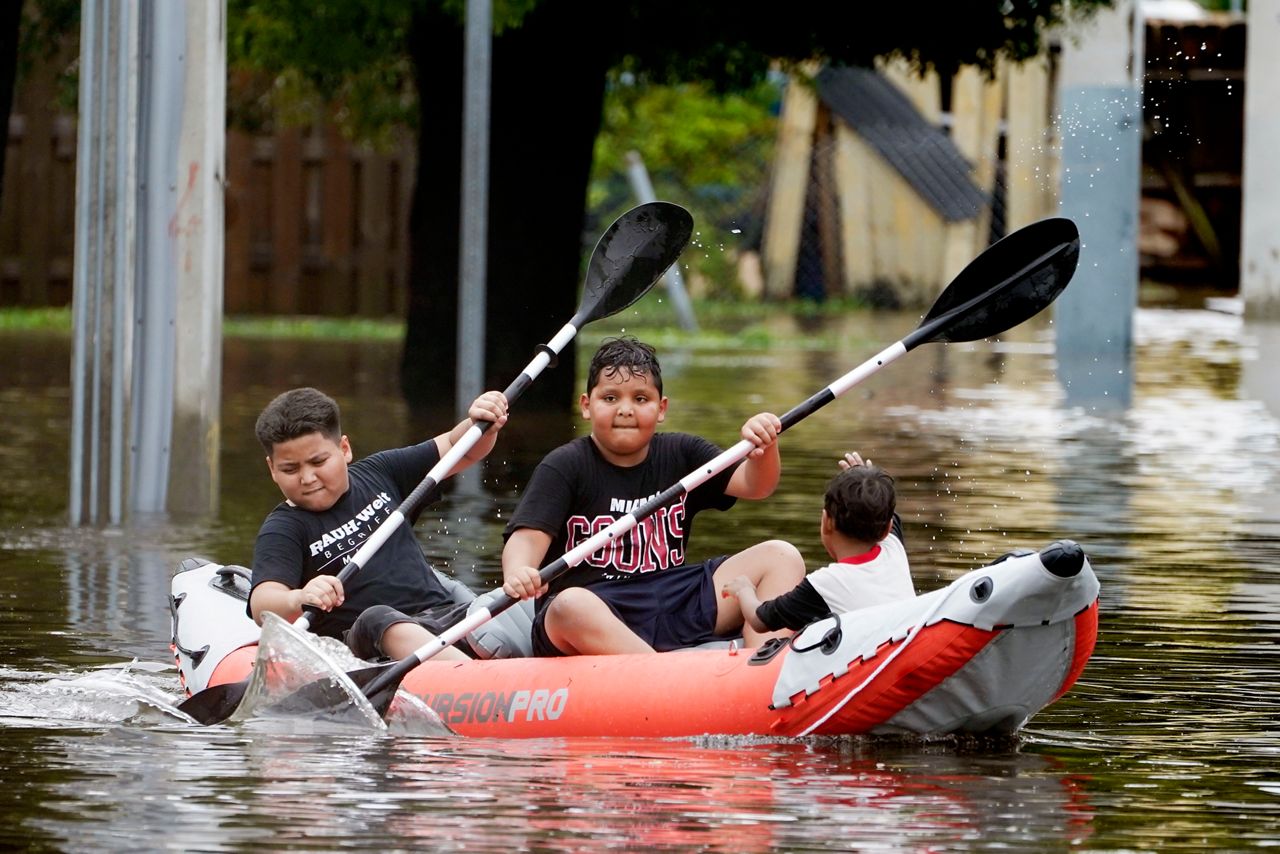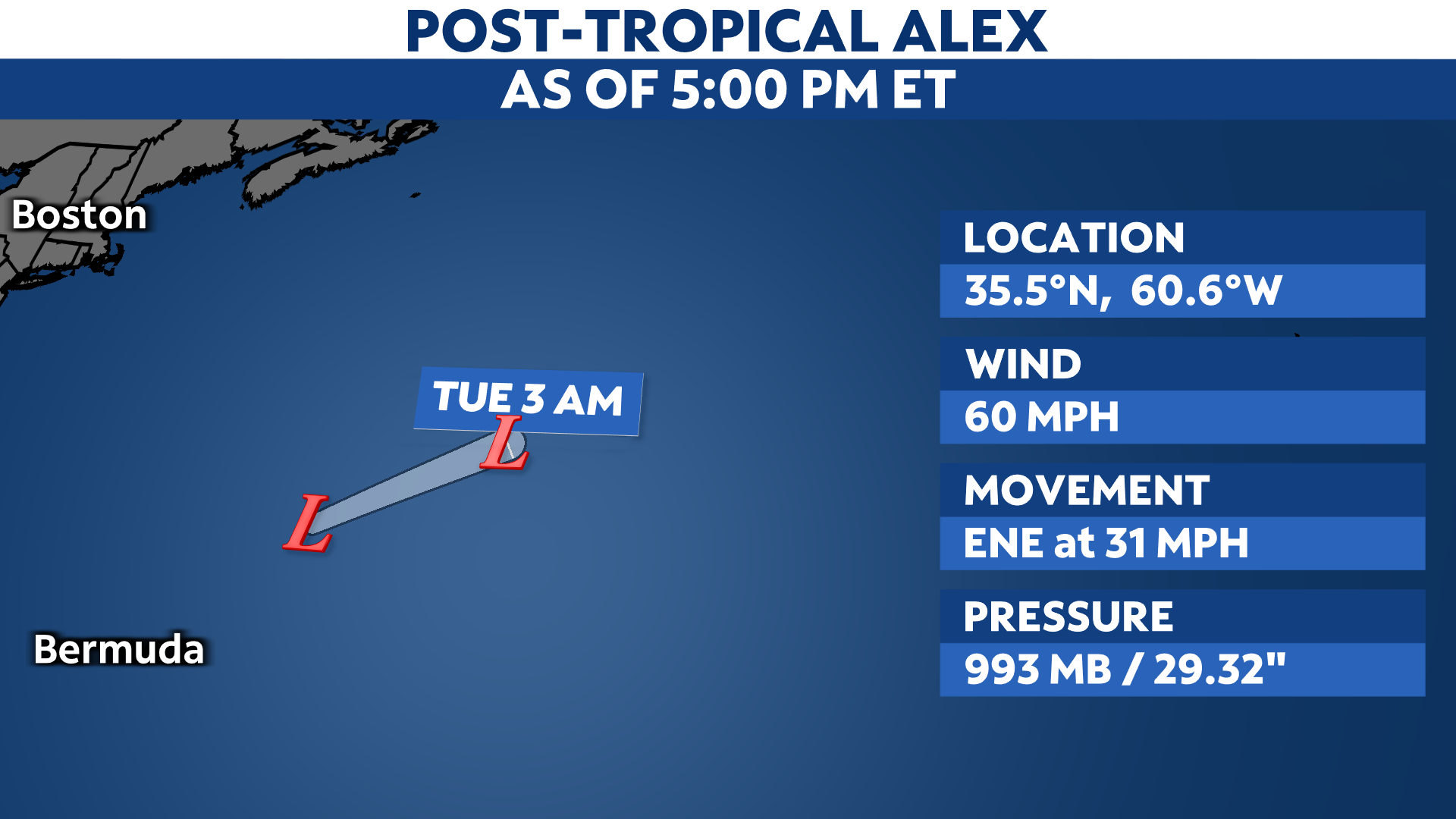Alex continues to weaken and is now post-tropical.
Alex will continue speeding out to sea, heading away from Bermuda and clipping along to the northeast.
Computer model forecasts also agree on a north-eastward track.

Spaghetti models or plots show a series of individual computer forecast models together on one map. They are useful to give insight into whether multiple models are in agreement or not on the path of the storm, but they do not address the storm’s forecast intensity, winds, flooding and storm surge potential or other data. Tap here for more details on how to best use these models.
Alex’s weekend impacts
Alex became the first named storm of the Atlantic hurricane season after it brought downpours and flooding across South Florida and the Bahamas on Saturday. It formed early Sunday morning in the Atlantic, just about 165 miles east-northeast of Fort Pierce, Florida.
Alex started as Agatha in the eastern Pacific, which formed early Saturday morning on May 28. It became a hurricane a day later before making landfall last Monday in southern Mexico.
It fell apart into a remnant disturbance Tuesday morning before moving into the Gulf Mexico. However, the disturbance struggled to regain its strength as it moved towards the northeast.
While wind shear and drier air aloft actually weakened this lopsided system on its approach to South Florida Friday night into Saturday, it still brought heavy rainfall and flooding.
The disturbance regained its strength and better organization upon moving off the Florida coast Saturday night and became the first named storm of the season early Sunday morning, Tropical Storm Alex.
Deadly storm
Before the storm was Alex, it was Potential Tropical Cyclone One. The system brought flooding rains to parts of South Florida. Heavy downpours from the storm caused flash flooding in Miami.
In addition, the National Weather Service in Miami says several areas got more than a foot of rain from PTC One.

Young boys paddle an inflatable kayak on a flooded Miami street, Saturday, June 4, 2022. (AP Photo/Marta Lavandier)
The storm also brought flooding rains to Cuba. Three people died from the storm that hit the island, according to the Associated Press.
The remnants of Hurricane Agatha killed at least 9 people in Mexico last week as the storm crossed over from the Pacific into the Gulf of Mexico.
Pacific-Atlantic crossovers
A tropical disturbance crossing from one basin to the other isn’t especially rare, although it’s usually the remnants regenerating instead of an intact system surviving the crossing. And, the more common direction is Atlantic-to-Pacific, not vice versa.
For a recent account of remnants from one basin redeveloping in the other, that happened just last year. The Atlantic’s Grace dissipated over Mexico, but its remnant circulation became Marty in the Pacific. In 2020, Amanda in the Pacific fell apart but led to Cristobal in the Atlantic.
Over the past 50 years, 12 tropical systems remained fully intact while crossing basins. The last was Otto in 2016, tracking from the Atlantic to Pacific. Going the other direction, the most recent storm was Hermine in 2010.





